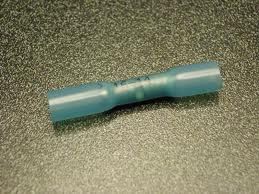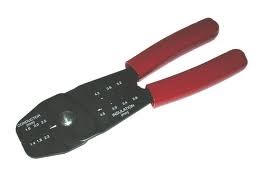In the world today, people sometimes aren’t able to perform certain tasks due to limitations of the human body. Some of these tasks need to be completed deep underwater such as; exploring lost ships at sea like the Titanic or examining a specific species of fish. ROV's have also helped in situations such as the BP oil spill in 2010. The situation that will be presented to my group next year will be to create an underwater ROV that will be able to be able to perform certain tasks. This ROV will be self-propelled, and will have an arm that will be used to grab various objects. My specific role in the group will be to design and construct the electronics of the ROV while my group members, Eric Watkins and Matt Orgill, will create the hull and the arm.
 |
| Students using a home made ROV |
 |
| ROV being used in open water |
 |
| ROV being used in a controlled area |
 |
| Children learning about ROV's |
 |
| Students participating in an ROV comepetition |
Three people will be involved in addressing this situation. These three people will include Eric Watkins, Matt Orgill, and myself. Throughout the year, Matt Orgill is in charge of creating the arm for the ROV. This arm will basically have to have one or three joints that will give it flexibility. This flexibility will allow the ROV to reach the objects to which the ROV will grab. Eric Watkins is designing and building the hull of the ROV. This hull will house the electronics and hold the arm. I have the electronics for this ROV so that the ROV can function without us being near. The end user of this ROV will be Matt Orgill and myself since the SeaPerch competition only allows two team members to control the ROV. The pictures/videos below represent the competition and the items that the three of us in the group will be using to create each individual part of the ROV.
 |
| DPDT switch |
 |
| Positive and negative wire |
 |
| Marine Thruster |
 |
| PVC pipe |
 |
| 12V battery |
The situation of creating an ROV must be addressed for a few reasons. One of those deals with the fact that technological advances never stop, and that the ROV’s of today are different than those of tomorrow. My group and I are creeating an ROV that will be, hopefully, better than those created in years before at Mast. With this in mind, we must first design an ROV that is equally as good, and then make it better. This situation must also be addressed because, ROV’s are an important tool in our world, they have helped humans in many ways. One would be the BP oil spill. People were not able to go down to the depth that the broken well was on, so, they relied on ROV's to do the job for them (controlling them from a safe location). ROV's on land have also done a lot that humans cannot. Recently in Japan, ROV's were used to investigate extremely radioactive sections of the Fukushima nuclear power plant. The reason why the SeaPerch competition exists, and that is because, it is important to learn the basics if we have to do something similar but more intricate in the future.
 |
| A ship traveling through the Gulf oil spill |
 |
| The oil rig responsible for the spill |
 |
| The well leaking oil |
 |
| Effects of oil spills |
 |
| Burning oil on the surface of water |
Understanding who the stakeholders of the ROV are is very important in the real world. When using the example of the BP oil spill, one can say that those who benefit from the ROV's involved range from many different people. Firstly, The ROV benefits the residents and the animals in the surrounding areas of the spill. Also, the ROV benefits the engineers who were, and still are trying to fix the problem. Plus, the ROV also helps the executives of BP who lost a lot of money due to the spill. At a smaller scale, the ROV's of the SeaPerch competition also benefit the stakeholders involved. For one, the students who are involved in the competition learn a lot about ROV's, and this would help them if they pursue engineering. This competition also helps the engineering community for the fact that this competition can inspire tomorrow's future great engineers.
The intended mood of the design for the ROV will be mostly serious. With a PVC pipe hull and arm, the ROV will not be very appeasing to look at. However, when creating an ROV, this is the last thing that should be addressed. This is because; the main importance of the ROV is to move in the water with a working arm. If time permits, an outer shell around the hull may be added to remove drag as it moves through the water. As far as painting goes, vibrant colors will be used so that those controlling above water can see the ROV easily. The mood of our ROV will be very similar to that of a professional ROV. This is because the ROV will be used to perform specific tasks, as a professional ROV would be used to do. A more playful ROV would not be similar to ours because, those kind of ROV's don't have a purpose.
 |
| Professional ROV |
 |
| A home made ROV |
 |
| Another home made ROV |
 |
| A kids toy ROV |
Some products on the market are similar to an ROV. One of these is the Sea-Doo Seascooter. This is a contraption with handlebars and a turbine. When the rider presses the throttle, the turbine spins, pulling the rider at speeds up to 3.3 mph. This product is important to look at because; we as a group will need to build a similar propulsion system that will allow our ROV to move through the water. Another similar product is the Robosapien. This children’s toy has two arms that rotate on axles allowing movability. Although this is a toy, we must create a similar arm for our ROV.
 |
| Industrial thrusters |
 |
| Butt connectors |
 |
| Robosapien |
 |
| Wire crimpers |
 |
| Wire strippers |
 |
| SeaPerch's model ROV |

No comments:
Post a Comment